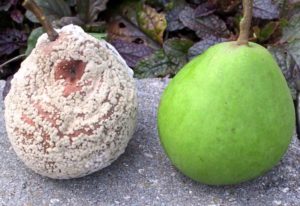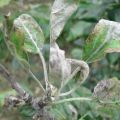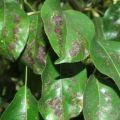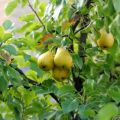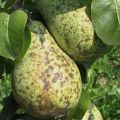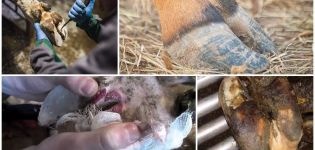The reasons for the appearance of a gall mite on a pear and measures of control with chemical and folk remedies
The appearance of spots on the leaves of a plant signals the gardener of serious problems. It is urgent to take preventive measures in order to prevent the spread of the outbreak and not be left without a crop. Such a danger is posed by a gall mite that has appeared on a pear. It feeds on the sap of the tree, weakening and depleting the latter. The harvest is meager and low-grade. It is urgent to get rid of the pest and prevent its further appearance on the site.
Description of the pest
The gall mite that lives on the pear belongs to the sucking insect species. It cannot be seen with the naked eye, since the body of the pest reaches a maximum size of 0.3 mm. With the help of a sharp proboscis, he perforates the leaf and sucks out cell juices from it. The tick can live everywhere where pears are grown.
In winter, mite larvae hide under the scales of deciduous buds, and with the onset of heat they suck the juice out of them, as a result of which the bud dies. In the same period, the females lay eggs, and the larvae that have grown from them continue to suck the sap from the tree. 3-5 new generations of ticks grow in one season.
Reasons for the appearance
Gall mite spreads under the influence of human factors, with the help of insects and birds, as well as wind, which contributes to the appearance of pest larvae. A thickened crown, a long absence of sanitary pruning, as well as an excess of fertilizers containing phosphorus in the soil can provoke its occurrence on the pear.
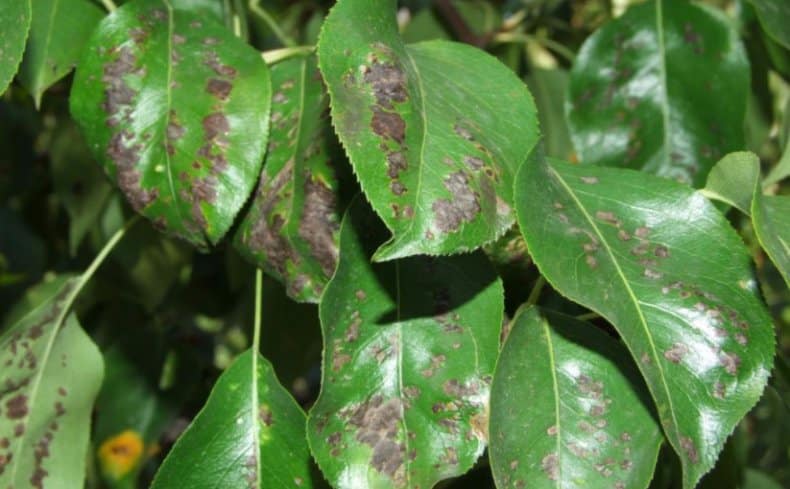
Some stimulants used in horticulture can increase the number of gall mites. In addition, recently actively used insecticides destroy natural enemies of a dangerous pest. Diseases also greatly weaken the pear, making it available for the reproduction of pathogenic organisms.
What is the harm from a tick?
The gall mite can cause significant harm to a healthy pear, which is expressed in the following:
- slowing down the growth of young shoots;
- destruction of the kidneys;
- damage to buds and ovaries;
- significant decrease in yield indicators.
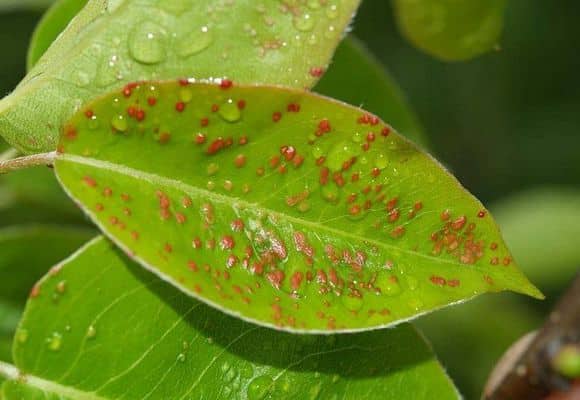
A pear infected with a gall mite lacks nutrients, as a result of which it may not endure the winter and freeze out in extreme cold.
Gall mite control measures
Prevention of the appearance of a gall mite in the garden consists in observing simple agricultural measures. However, if the pest is already assimilating into your favorite varieties of pears, you must act urgently.
Chemical treatment
Chemical methods of gall mite control bring the fastest result. In addition, they are recognized as the most effective and efficient.
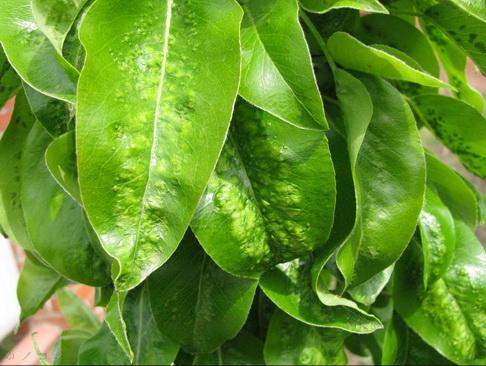
Apollo
Apollo is a contact action pesticide. It is able to completely destroy pests without harming the beneficial fauna of the garden. A feature of the drug is that after processing, not only adults die, but also young animals, as well as eggs laid by females. Processing is carried out in accordance with the instructions attached to the tool.
"Karate"
Karate drug destroys not only female gall mites, but also their eggs. It is not recommended to use it if there is an apiary nearby. The active ingredient simultaneously destroys many other garden pests and their larvae.
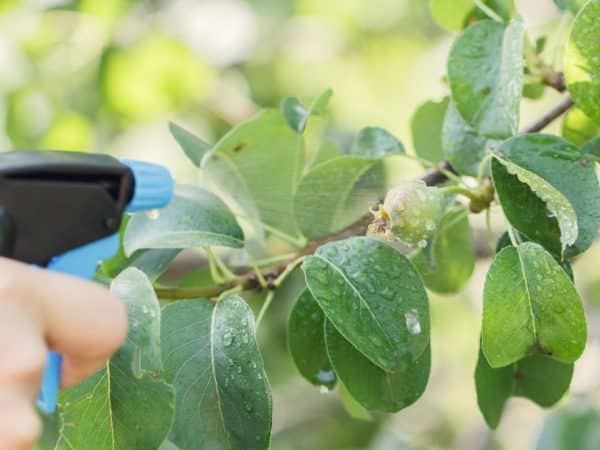
"Fufanon"
Pesticidal agent for contact intestinal exposure. It is based on an organophosphorus compound. In addition to the gall mite, it helps to get rid of other pathogenic microorganisms. Recommended for use if insects have acquired immunity to pyrethroids.
Biological pesticides
Proponents of organic farming in the fight against gall mite on pears more often prefer biological pesticides, considering them harmless to the environment.
"Vertimek"
This preparation contains a biological pesticide in its composition, obtained by processing the waste products of fungi. Refers to the means of contact intestinal exposure. Use "Vertimek" if the gall mite living on the pear has shown resistance to other acaricides. The active substance does not act through cell membranes, therefore it does not have the property to accumulate in fruits. The effectiveness of the drug improves with increasing ambient temperature.

Fitoverm
When a gall mite appears on trees, an effective fight against it by spraying with pesticides is carried out before the budding begins or immediately after flowering. During the first spraying, the female pest is destroyed, which spent the winter in the buds of the tree. For this purpose, Fitoverm is well suited. As a result of its influence, it is possible to avoid the wave of mass reproduction of insects in the spring.
Rules for the preparation of folk remedies
Folk remedies based on natural ingredients help to fight the invasion of gall mites on pears. Dandelion infusion has proven itself excellently, which is prepared as follows. Take 1 kg of fresh dandelion leaves, pour 3 liters of water and leave to infuse in a dark place for 3 days. The resulting infusion is filtered, a little liquid soap is added and a pear is sprayed with it.

To get rid of the gall mite, an infusion of marigold herb is prepared. They take 100 grams of flowers and boil them in 1 liter of water for 5 minutes, after which they insist in a dark room for 5 days. After that, filter the infusion, dilute with water in a 1: 1 ratio and spray the pear.
An excellent result in the fight against gall mites is shown by infusion of potato tops. It is prepared from 1 kg of fresh or 0.5 kg of dried chopped tops, which is poured with 10 liters of warm water and allowed to brew for 4 hours, after which it is filtered, a little liquid soap is added and the pear is processed.
You can use the prepared infusion only during the day, after which it becomes unusable.
Processing pears against gall mites is carried out in the morning or evening hours, as well as in dry cloudy weather. Under the rays of the scorching sun, droplets of liquid can provoke burns on the leaves. In addition, some active ingredients lose their effectiveness under the scorching sun.
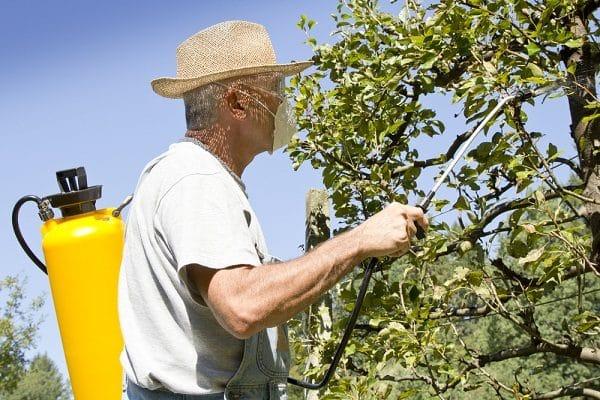
Prevention
Preventive measures aimed at combating gall mites on pears are aimed at not creating favorable conditions for the reproduction of the pest. It is necessary to correctly and accurately calculate the dosage of the applied dressings, especially those containing phosphorus.
It is imperative to carry out sanitary pruning of trees, remove dead bark, with the onset of autumn, remove the leaves and dig up the soil in the peri-stem circle of the pear. Timely whitewashing of trunks with a solution of lime also prevents gall mites from appearing in the garden.
Growing weeds should be either completely removed from the site or cut. In the latter case, the roots remaining in the ground will replenish the supply of nutrients. Treatment with chemical and biological agents, as well as folk remedies designed to destroy gall mites, is also recommended for prophylaxis. Its frequency is once a month.
A good result in the prevention of the appearance of pests on pears is shown by the use of trapping belts, for the manufacture of which burlap or corrugated paper is used.

